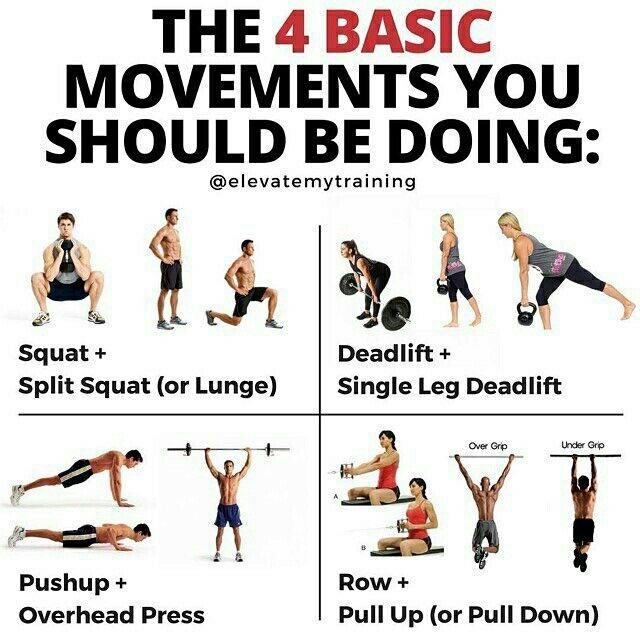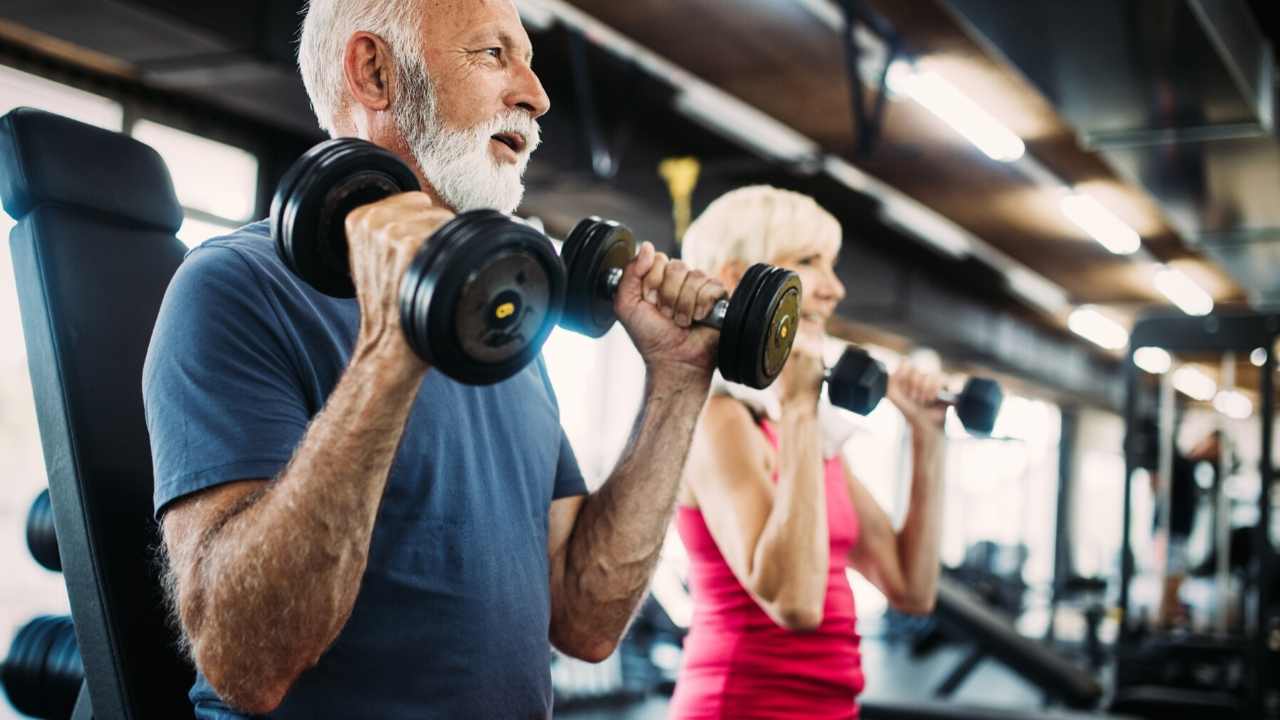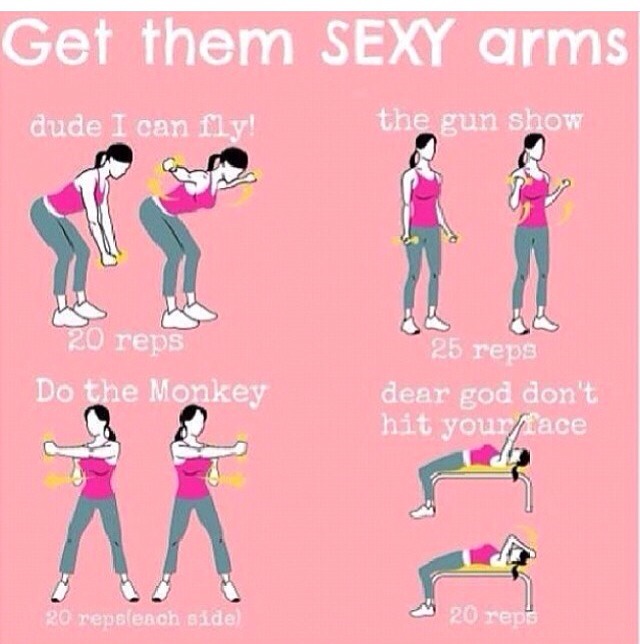
Here are some exercises to help you keep going if your current workout regimen is not working for you. Do not force yourself into doing any exercises that aren't your favorite. Mix up your routine by doing a few exercises you enjoy. Walking briskly in morning can be combined with a short jog at the end of the day. Also, remember to stretch and warm up before and after your workout. You can also improve your cardiovascular health by engaging in light activities.
Make sure you keep your routine fresh by varying it every four weeks. You can vary the sets and exercises that you do in order to keep your muscles from deteriorating. Research has shown that subjects who varied their workouts gained strength faster than those who stayed in the same routine. Another tip for exercising is to warm up before and afterwards. This is because it helps muscles adapt to physical activity. It also reduces soreness.

If you're new to exercising, consider adding a fitness routine to your daily life. It will give you a consistent routine for many years. You will be motivated to follow it and it won't feel like a chore. These tips can help you achieve your exercise goals. If you don't have a schedule, make one that fits into your life. You can also incorporate fitness activities that you enjoy, such as walking or cycling.
Solo dance parties are a great way of adding energy and positivity into your day. You'll be able not only to dance but also increase your endorphin level. While performing an intense workout, it's best to put your thoughts to one side. Your breathing will be easier and you'll be able exercise more efficiently if your focus is on your breathing. So, try a solo dance party. You'll be pleased with the results.
When working out, consider your rate of perceived exertion and heart rate. You will be motivated by these indicators. You can gauge how hard you are exercising by monitoring your heart rate. A higher heart rate means you're working out harder and you're more likely to work out longer. Your heart rate and perceived exertion can be measured to help you determine your preferred pace for exercise. You can also try to exercise with a friend.

When starting an exercise routine, don't push yourself too hard. Do not overwork yourself. This can lead to burnout, injury, or even giving up. For beginners, you should aim for 15 to 20 minutes of moderate exercise per day and two 10-minute bursts each week of strength exercises. It's important to pay attention to your core and not just your abs when you work out.
FAQ
What can I do to boost my immune system?
There are trillions upon trillions on cells in the human body. These cells combine to form organs or tissues that serve specific functions. When one cell dies, another cell replaces it. Chemical signals, called hormones, allow cells to communicate with each other. All bodily processes are controlled by hormones, including metabolism and immunity.
Hormones are chemical substances that glands secrete throughout the body. They travel through bloodstreams and act as messengers that control the function of our bodies. Some hormones can be produced in the body, while others may be made outside.
Hormone production occurs when hormone-producing cells release their contents into your bloodstream. Once hormones have been released, they travel through the body until reaching their target organ. Some hormones may only remain active for a limited time. Some hormones remain active for longer periods of time and can continue to have an impact on the body's function long after they are gone.
Some hormones may be produced in large numbers. Others are made in small quantities.
Some hormones only are produced during certain periods of life. For example, estrogen can be produced during puberty or pregnancy. Estrogen aids women in developing breasts, maintaining bone density and preventing osteoporosis. It is also known to promote hair growth and keep skin soft and smooth.
What does it take to make an antibiotic work?
Antibiotics are medications that kill harmful bacteria. The treatment of bacterial infections is done with antibiotics. There are many types of antibiotics. Some can be taken orally, others are injected and some are applied topically.
People who have been infected with certain germs may need antibiotics. One example is if someone has had chickenpox and wants to prevent shingles. A penicillin injection might be given to prevent pneumonia in someone who has had strep.
Children should not be given antibiotics without the consent of a doctor. Children are at greater risk of developing side effects from antibiotics than adults.
Diarrhea is one of the most common side effects of antibiotics. Other side effects that could occur include nausea, vomiting and dizziness. These side effects usually disappear once treatment has ended.
What are 10 healthy lifestyle habits?
-
Get breakfast every morning.
-
Don't skip meals.
-
Eat a balanced, healthy diet.
-
Drink plenty of water
-
Take care of yourself.
-
Get enough sleep.
-
Avoid junk food.
-
Do some exercise every day.
-
Have fun
-
Make new friends.
How much should I weight for my height and age? BMI chart & calculator
Use a BMI calculator to determine how much weight is needed to lose. A healthy BMI range should be between 18.5 and 24,000. If you want to lose weight, then you should aim to drop about 10 pounds per month. Enter your height and weight to calculate your BMI.
This BMI chart can help you find out if or not you are obese.
How often should i exercise?
For a healthy lifestyle, exercise is vital. But, you don't need to spend a specific amount of time exercising. Finding something you enjoy is key. Stick with it.
If you work out three times a week, then aim to complete 20-30 minutes of moderate intensity physical activity. Moderate intensity means that you will still be working hard even after your workout is over. This type of workout burns around 300 calories.
Walking is a great option if you are a keen walker. You can do 10-minute walks four days per week. Walking is low impact and easy on your joints.
Jogging for 15 minutes three days a week is a good option if you prefer to run. Running can help you burn calories and to tone your muscles.
Begin slowly if your are not used to working out. Begin by only doing 5 minutes of cardio five times per week. Gradually increase the duration until you reach your goal.
Does being cold give you a weak immune system?
It's been said that there are two kinds of people in the world; those who love winter and those who hate it. But whether you love or hate it, you may find yourself wondering why you feel so lousy when it's cold out.
The fact is that our bodies are designed for warmth and function best. Our bodies were designed to thrive in hot weather because this is where the majority of our food sources are.
However, our environment is quite different than that of our ancestors. We spend much more time indoors, often exposed to extreme temperatures (cold and heat), and we eat foods that are processed rather than fresh.
Because of this, our bodies have become accustomed to extremes. That means that when we do venture outdoors, we're left feeling tired, sluggish, and even sick.
However, there are some ways to reduce these effects. Keep your body hydrated. Drinking plenty of water will help you keep your body hydrated and flush out toxins.
A healthy diet is another important thing. Healthy food will help your body maintain its optimal temperature. This is especially true for people who spend long hours indoors.
You can also meditate for a few minutes every day. Meditation can relax your mind and make it easier manage stress and illness.
Statistics
- The Dietary Guidelines for Americans recommend keeping added sugar intake below 10% of your daily calorie intake, while the World Health Organization recommends slashing added sugars to 5% or less of your daily calories for optimal health (59Trusted (healthline.com)
- According to the 2020 Dietary Guidelines for Americans, a balanced diet high in fruits and vegetables, lean protein, low-fat dairy and whole grains is needed for optimal energy. (mayoclinichealthsystem.org)
- WHO recommends reducing saturated fats to less than 10% of total energy intake; reducing trans-fats to less than 1% of total energy intake; and replacing both saturated fats and trans-fats to unsaturated fats. (who.int)
- Extra virgin olive oil may benefit heart health, as people who consume it have a lower risk for dying from heart attacks and strokes according to some evidence (57Trusted Source (healthline.com)
External Links
How To
What does the word "vitamin" mean?
Vitamins are organic compounds naturally found in food. Vitamins aid us in absorbing nutrients from the food we eat. Vitamins are not made by the body, so they must be obtained through food.
There are two types of vitamins: water soluble and fat soluble. Water-soluble vitamins dissolve easily when they are dissolved in water. Vitamin C,B1(thiamine), B2 (2riboflavin), and B3 (3niacin), as well as vitamin C,B1, B2 (riboflavin), and B3 (niacin), vitamin B6 (pyridoxine), vitamin folic acid (biotin), pantothenic, and choline are examples. The liver and fatty tissues are home to fat-soluble vitamins. Some examples include vitamin D and E, K, A and beta carotene.
Vitamins can be classified by their biological activity. There are eight major categories of vitamins.
-
A - vital for healthy growth.
-
C - important for proper nerve function and energy production.
-
D - Vital for healthy bones and teeth
-
E - needed for good vision and reproduction.
-
K - essential for healthy muscles, nerves, and bones.
-
P - Essential for strong bones and teeth.
-
Q - Aids in digestion and absorption.
-
R - Required for red blood cell production
The recommended daily allowance (RDA), for vitamins, varies depending upon age, gender, or physical condition. The U.S. Food and Drug Administration has established the RDA values.
For adults aged 19 and older, the RDA for vitamin B is 400 micrograms daily. Because it is essential for the development of the fetus, pregnant women should consume 600 micrograms per daily. Children ages 1-8 require 900 micrograms per day. Infants under one year of age require 700 micrograms per day, but this amount decreases to 500 micrograms per day between 9 months and 12 months of age.
Children between the ages 1--18 years old who are overweight or obese require 800 micrograms per Day, while those who are overweight or obese need 1000 micrograms. To meet their nutritional needs, children underweight and obese require 1200 micrograms a day.
Children 4-8 years old who have anemia must consume 2200 micrograms of Vitamin C daily.
2000 micrograms is the minimum daily intake for adults over 50 years old to maintain good health. Because of their higher nutrient needs, women who are pregnant or nursing need 3000 mg per day.
Adults over 70 need 1500 micrograms daily, as they lose 10% of their muscle every ten years.
Women who are pregnant, nursing or breastfeeding need more than the RDA. Pregnant woman need 4000 micrograms daily in pregnancy, and 2500 per day after childbirth. Breastfeeding mothers need 5000 micrograms per day when breast milk is being produced.